| SHADOWS ON THE WALL | REVIEWS | NEWS | FESTIVAL | AWARDS | Q&A | ABOUT | TALKBACK | |||||
 Shadows off the beaten path Shadows off the beaten pathIndies, foreign, docs and shorts...
On this page:
BLOOM UP: A SWINGER COUPLE STORY |
FADIA'S TREE |
ORCHESTRATOR OF STORMS
| |||||
| See also: SHADOWS FILM FESTIVAL | Last update 28.Aug.22 | |||||
|
Bloom Up: A Swinger Couple Story
Review by Rich Cline | 
| |||||
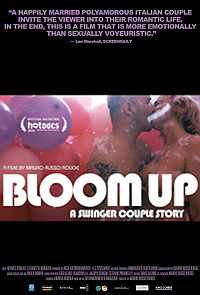 dir-scr-prd Mauro Russo Rouge with Elisabetta Barbero, Hermes Osnato, Ezio, Sara, Simona, Francesco, Laura, Maurizio, Miriam, Serena, Denise, Lorenzo, Katia, Valentina, Romana, Filippo, Massimo, Nunzio, Michele, Celeste, Karem, Fuego release It Jun.21 bff, US 12.Aug.22 21/Italy 1h28 Now streaming... |
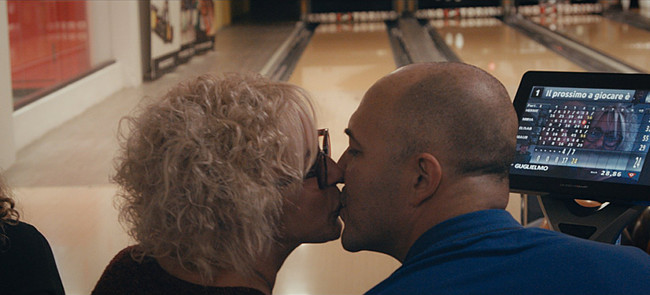 With unusual honesty, this documentary follows a couple who happily express their positive sexuality. Filmmaker Mauro Russo Rouge's camera observes them in intimate situations as part of their joyous swinger lifestyle with other couples and singles. The approach is remarkable in the way it never even hints at a moral judgement, simply taking the audience into a world that isn't remotely shocking for the people who live there. In Italy, married parents Elisabetta and Hermes run a neighbourhood pet shop. And with their tattoos and rock-n-roll style, they're a middle-aged couple in touch with their youthfully adventurous side. They're also planning a sex party for four or five couples in Turin at the weekend. There, things quickly turn affectionate as the clothes fall off. Of course, not all of their dinner parties segue into full-on love-ins. And the risk in their "wonderful parallel world" is that they might fall in love with someone else, because these powerful feelings can be difficult to control. Assembled in a relaxed fly-on-the-wall style, much of the film simply captures Elizabetta and Hermes in their daily routine with the store and at home, plus the usual flurry of getting ready to go out. Parties begin with socialising before shifting into montage sequences that are accompanied by a pulsing electronic music score with added moans of pleasure. This soft-porn touch feels a bit comical after the banal set-ups, especially as the sex itself is shot artfully and with some discretion. But most of the movie consists of scenes of Elisabetta and Hermes interacting in conversation with each other and their friends. After 13 years together, this playful couple is still deeply in love, and they also enjoy socialising with their "vertical" friends, many of whom know nothing about the other side of their life. The film covers a range of events in their lives, from bowling to a scantily clad frolic in the rain to questions about their future. The film depicts them as a normal couple with a lifestyle that doesn't remotely define them. They recognise that a lot of people have a problem with this scene, and even attendees at their parties can miss the point. But among their friends, they have an ease at discussing the most intimate issues. They also share their story to the cameras with bracing openness. Their views of the world and their own bodies are intriguingly wholistic, and they believe that this lifestyle is a healthy way to open the mind. Who are we to judge?
| ||||
|
Fadia’s Tree Review by Rich Cline | 
| |||||
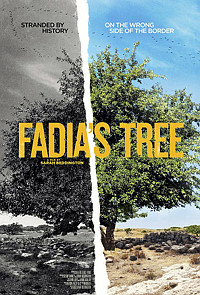 dir-scr Sarah Beddington prd Susan Simnett, Sarah Beddington with Fadia Loubani, Sarah Beddington, Sami Backleh, Amir Balaban, Simon Awad, Nemzia Awad, Abu Jehad Loubani, Mahmoud Salaam, Khalil Moussa, Ali Kassem, Razan Mograbi, Violette Hakmeh release UK 5.Aug.22 21/UK 1h26 Now streaming... |
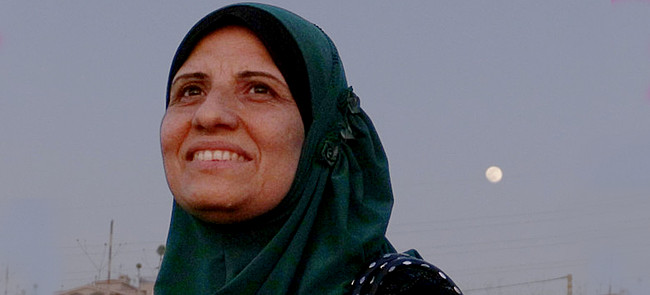 Sensitively shot and edited, this documentary traces a journey sparked by a relationship between a refugee and a filmmaker. The beautiful imagery captures a mix of nature, culture, history and eye-opening experiences, all from an unusually engaging perspective. Filmmaker Sarah Beddington makes offbeat connections along the way, which add layers of emotion and insight to tell a deeply personal story in the context of a much bigger world. It's been 15 years since a chance encounter in Beirut between Palestinian Fadia and British filmmaker Sarah, after which they visit Fadia's home in the city's grim Bourj el-Barajneh refugee camp. During a long conversation, Fadia shares fond memories of a house on a hill in her home village Sa'sa, in the very north of Israel. She holds on to a memory of a mulberry tree there, which has witnessed her family history for generations. Guiding her by telephone, Sarah goes in search of this tree that Fadia knows must also remember her family. Fadia has an infectious personality. As a teacher, she has established a thriving school for refugee children, working to give them a positive start in life. She shares her story of being married and becoming a mother of two as a teen, then being widowed shortly after her parents and siblings emigrated to Europe. With no options, she fled to Lebanon. Her anecdotes are fascinating, such as an account of her father's final visit to Sa'sa. The film conveys these things with striking lyricism, remaining curious and compassionate. Instead of using a voiceover narration, Sarah accompanies her artful camerawork with subtle captions that trace the history of Palestine. Not everyone who appears on-screen to share their observations and stories is identified, so scenes create a much larger picture of the terrible situation for a people groups that have lost their homelands. Following Fadia on a journey around the region is wonderful, enjoying the landscapes and thrilled to see the sun and moon at the same time, something she can't do in the heavily over-built camp. Along the way, Sarah interviews a few ornithologists and trains her cameras on the birds that migrate freely throughout the Middle East, while experts observe how the wall Israel has constructed has disrupted other animals' natural movements. This of course cleverly echoes Fadia's feelings: "I hate borders so much!" And without being political, this also makes the film a compelling exploration of how it feels to be a person who has had to flee their native land.
| ||||
|
Orchestrator of Storms: The Fantastique World of Jean Rollin Review by Rich Cline | 
| |||||
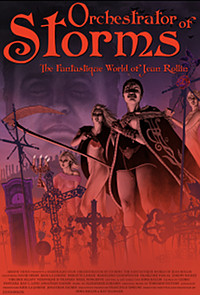 dir-scr-prd Dima Ballin, Kat Ellinger with Veronique D-Travers, Brigitte Lahaie, Francoise Pascal, Madeleine Le Despencer, Jeremy Richey, Virginie Selavy, David Hinds, Kier-La Janisse, Howard S Berger, Nigel Wingrove narr Ayvianna Snow, Benoit Carry release UK Aug.22 frf 22/US 1h52  Now streaming...
| 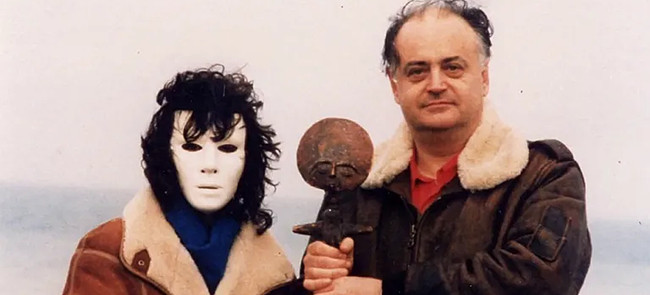 Brisk and packed with detail, this documentary traces the life of a little-known filmmaker who told poetic stories about dreams and memory, often using horror and sex. Critics dismissed his work as exploitation, but scholars now see his roots in the art world and his important contribution to the French New Wave. Even if it's overlong, this is an essential doc about a rarely explored side of cinematic history. Jean Rollin was only happy when making films, and he made more than 50 between 1958 and 2009. Using the same low-budget style as his New Wave colleagues, his work has a distinctive gothic voice. But Rollin only achieved recognition late in life, largely because horror didn't fit with high-brow French cinema. Instead he struck out on his own, creating more maverick movies and becoming a pioneer in the Euro-cult movement. Freed from the industry, he could develop his distinctive cinematic vision. Rediscovered after the advent of video, his work is now considered iconic. Set out chronologically using his own words alongside interviews with collaborators and experts, the film begins in Rollin's childhood influences. His life-loving mother introduced him to iconic intellectuals and artists as a child, and he worked his way up through virtually every aspect of cinema, starting in poster design. His first feature Rape of the Vampire was released during the riots of May 1968, sparking outrage from both audiences and critics. And he followed this with films that continually subverted expectations as they took on social issues, including porn in the late 1970s and operatic violence in the 1980s. It's wonderful to see so many extended clips from Rollin's rarely seen movies, which reject the usual rules about genres to provoke the viewer with much bigger ideas. With a style derived from surrealism, his films are peppered with references to wider culture, exploring the nature of beauty and desire through a sometimes grotesque eye. Characters are often naked, revealing their power, vulnerability and humanity. Although it was producers who insisted on adding nudity and sex for commercial reasons. And even in his pornographic films, experts see signs of sex-positive feminism. Essentially, Rollin was a struggling artist who created his own cinematic universe. His work has a staggering beauty to it, drawing on art-history imagery through the stylings of exploitation cinema, often created improvisationally on the set. Larger themes echo through Rollin's movies, exploring ideas of complicity and freedom. And because his films fell between genres, it was up to scholars and fans of offbeat cinema to discover them.
| | |||

See also: SHADOWS FILM FESTIVAL © 2022 by Rich Cline, Shadows
on the Wall
HOME | REVIEWS | NEWS | FESTIVAL | AWARDS
| Q&A | ABOUT | TALKBACK | | ||||

